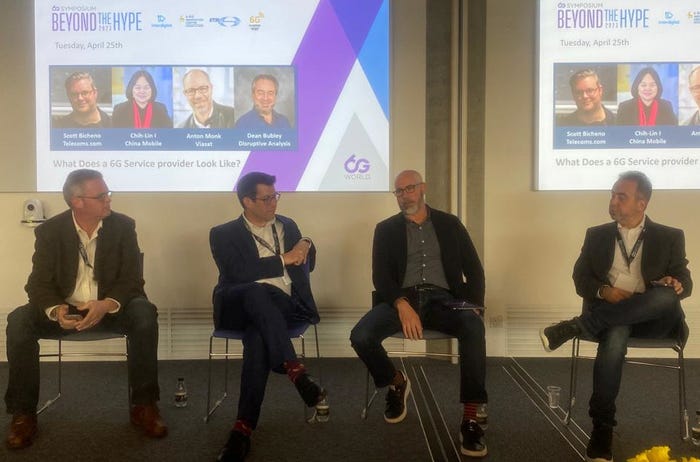The telecoms industry needs to break out of the rut set by 3G hype
At a recent 6G conference, the need to even have another specified generation of mobile technology was called into question.
April 26, 2023

At a recent 6G conference, the need to even have another specified generation of mobile technology was called into question.
The event was run by telecoms news site 6G World and hosted by the University of Surrey, at its 6G Innovation Centre, with the theme being ‘beyond the hype’. While it’s a tad premature to talk of 6G hype at this early stage in the cycle, when 5G is still struggling to find its feet, it was a laudable aim, especially for an organisation that has hitched its wagon to the 6G train.
The day consisted mainly of panel discussions, looking at 6G from several different industry perspectives. One of them was chaired by your correspondent and was themed ‘What does a 6G Service Provider Look Like?’ It was a mid-afternoon session, which offered the opportunity to take the temperature of the room from earlier panels and steer the conversation accordingly.

I was struck by the healthy and vigorous debate featuring stakeholders from across the industry, which really got going during a session themed ‘Vendor Approaches to 6G’. The brutal honesty was exemplified by an apparent consensus that the 5G hype is still far from being justified, so it’s far too early to start getting excited about what’s next. It was also noted that any future standards will struggle without full global collaboration, something which the current friction between the US and China calls into serious question.
There were a few efforts to flesh out what 6G might look like but they didn’t really get much further than ‘5G done properly’ with a bit of utopian AI and ubiquitous sensing thrown in to sex it up a bit. The 7-15 GHz range of spectrum seems to have been identified as a target for 6G but it’s still not clear what practical use all this extra bandwidth will be put to, especially when you consider its inferior propagation characteristics.
At the centre of any discussion around contemporary telecoms hype is the fact that the purpose of 5G and subsequent generations is much less clearly defined than their predecessors. Initially mobile technology was mainly about voice but then, coinciding with the frenzied internet speculative bubble at the turn of the millennium, came the prospect of using those same networks to transmit data too, as promised by 3G.
For those either too young or too forgetful to recall the over-exuberance of that time, this piece offers a good recap from a UK perspective. It stood to reason that if any company with a dotcom suffix was worth a punt, the technology designed to bring those companies to mobile phones was a sure bet too. The absurd amounts paid by operators to the UK government for the extra spectrum needed to do so exemplified that sentiment and further stoked the hype around 3G.
Coming, as it did, around a decade after 2G, the cadence was set. The unsatisfactory bandwidth served by 3G ensured another hype cycle around 4G towards the end of that decade. This time the hype was more justified, as proper mobile broadband brought with it an explosion of apps. The resulting assumption, at least on the part of MNO marketing departments, seemed to be that the industry could count on a reset of the hype and upgrade cycles once per decade.
But what can new generations of mobile tech offer other than more bandwidth? Thanks to the success of 4G, enhanced mobile broadband, as it has been framed in the context of 5G, doesn’t really address a strong need. Perhaps in desperation, the industry attempted to conflate machine-to-machine communication with 5G, but its only novel offering was to lower latency – i.e. the time it takes data to get from terminal to terminal.
There then followed a succession of increasingly speculative and far-fetched use-cases for this lower latency, typically involving things like remote-controlled surgery and people stumbling around the streets with wireless VR devices clamped to their faces. Unsurprisingly none of these have been embraced as ‘killer apps’ and 5G continues to undergo an identity crisis.
As highlighted by Samsung’s Dan Warren (who was also a last-minute super-sub for my panel) at the event, if 5G has a succinct purpose it’s to create new markets for mobile tech, primarily business-to-business ones. That’s a lot harder to articulate and sell than was mobile broadband, which everyone can get their head around. It also creates significant peril for existing communication service providers (operators) as they’re not necessarily set up to address those markets and risk losing ground to companies that are, such as system integrators.
A panel discussion featuring representatives of some of those operators seemed to be unanimous that there’s no appetite from that community for 6G to represent another capex-intensive hardware refresh. Rather, urged Vodafone’s Andrea Dona, it should lean more towards doing 5G properly (as 4G did after 3G), the precise nature of which will only become apparent once 5G is a lot more mature.
One heretical conclusion resulting from this event was that maybe there isn’t the need for something called 6G at all. Sure, we can rebrand wherever the industry is in 2030 with that tag but it may well be meaningless, especially to end users. That won’t stop marketing people from banging on about it, of course, but for the rest of us it would be more constructive to forget about Gs for a decade or two and refocus on boring essentials such as coverage and reliability.
Get the latest news straight to your inbox. Register for the Telecoms.com newsletter here.
About the Author
You May Also Like












_1.jpg?width=300&auto=webp&quality=80&disable=upscale)
